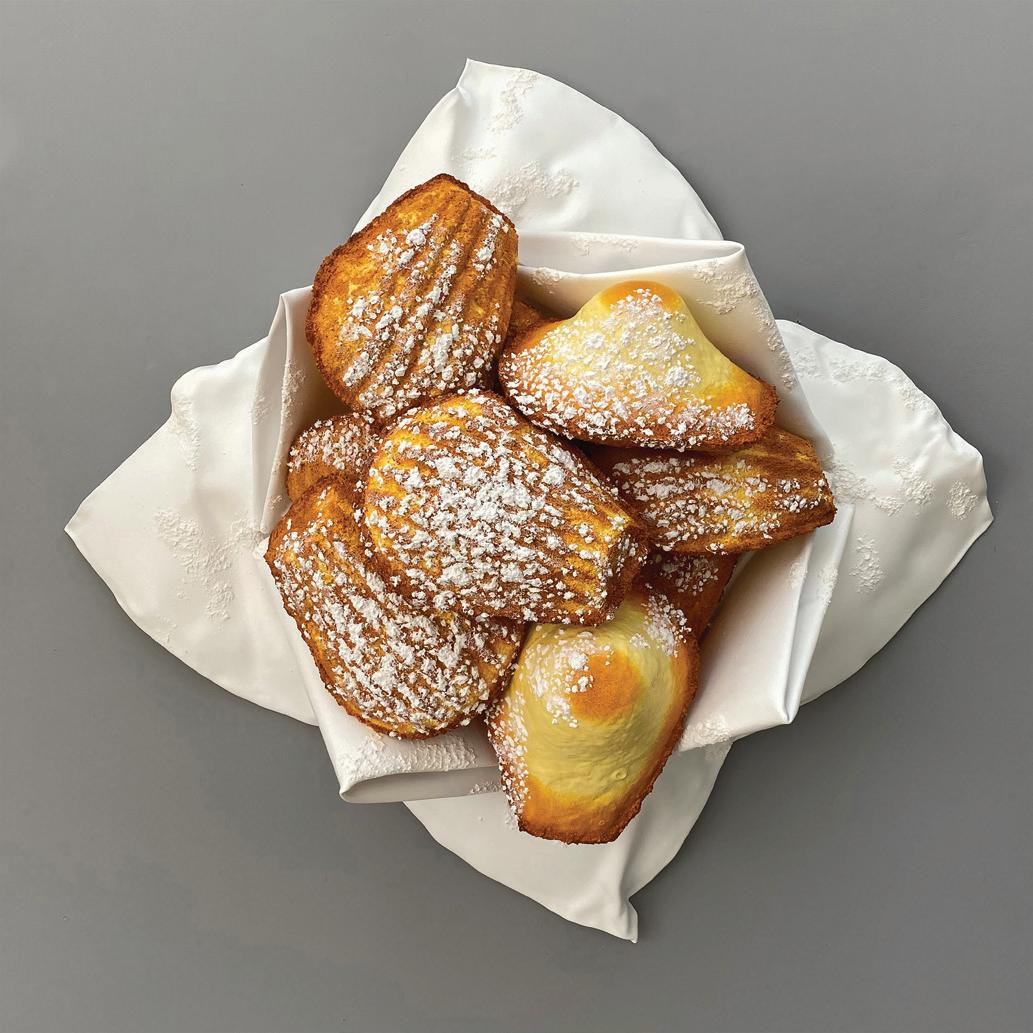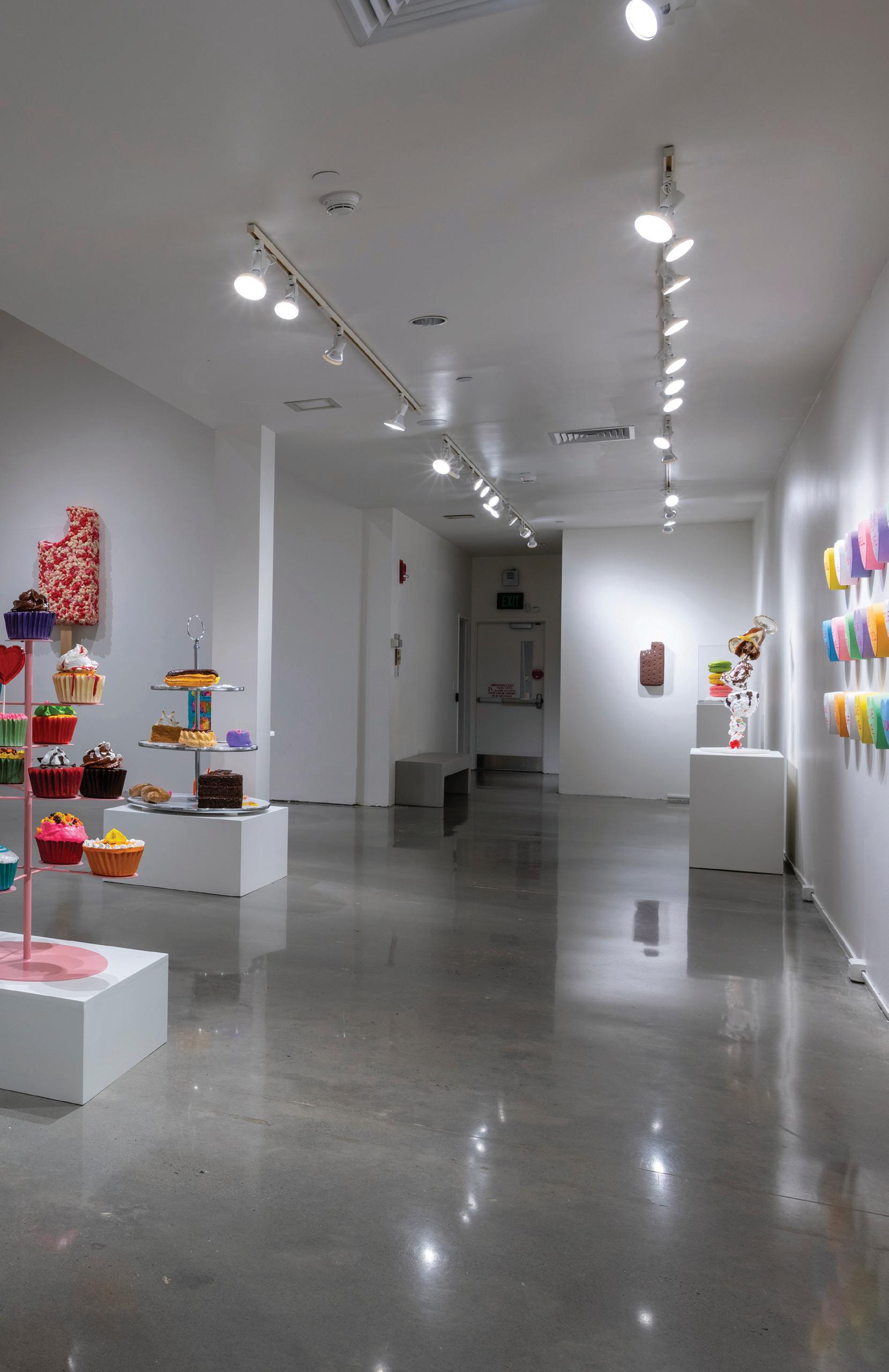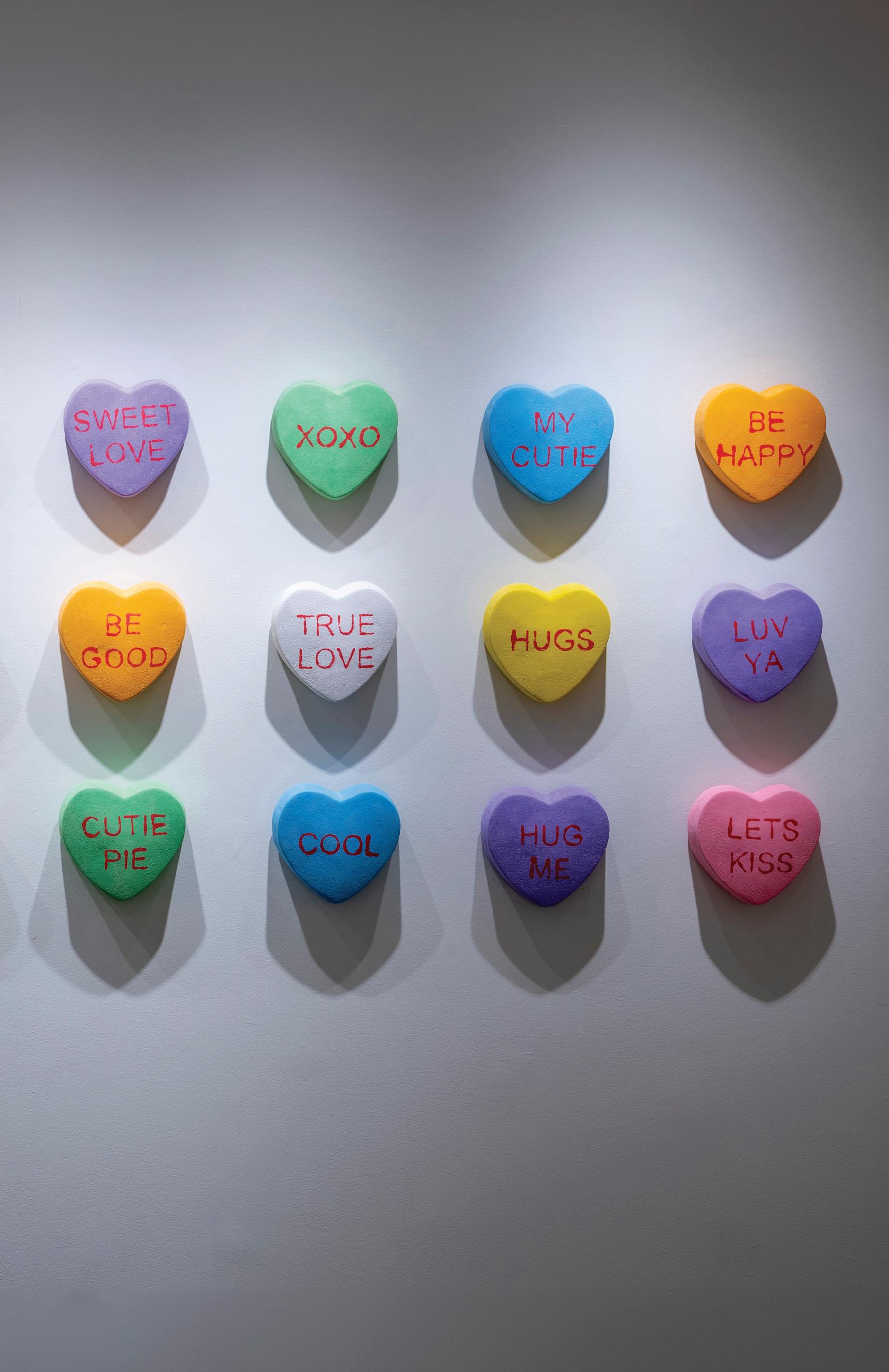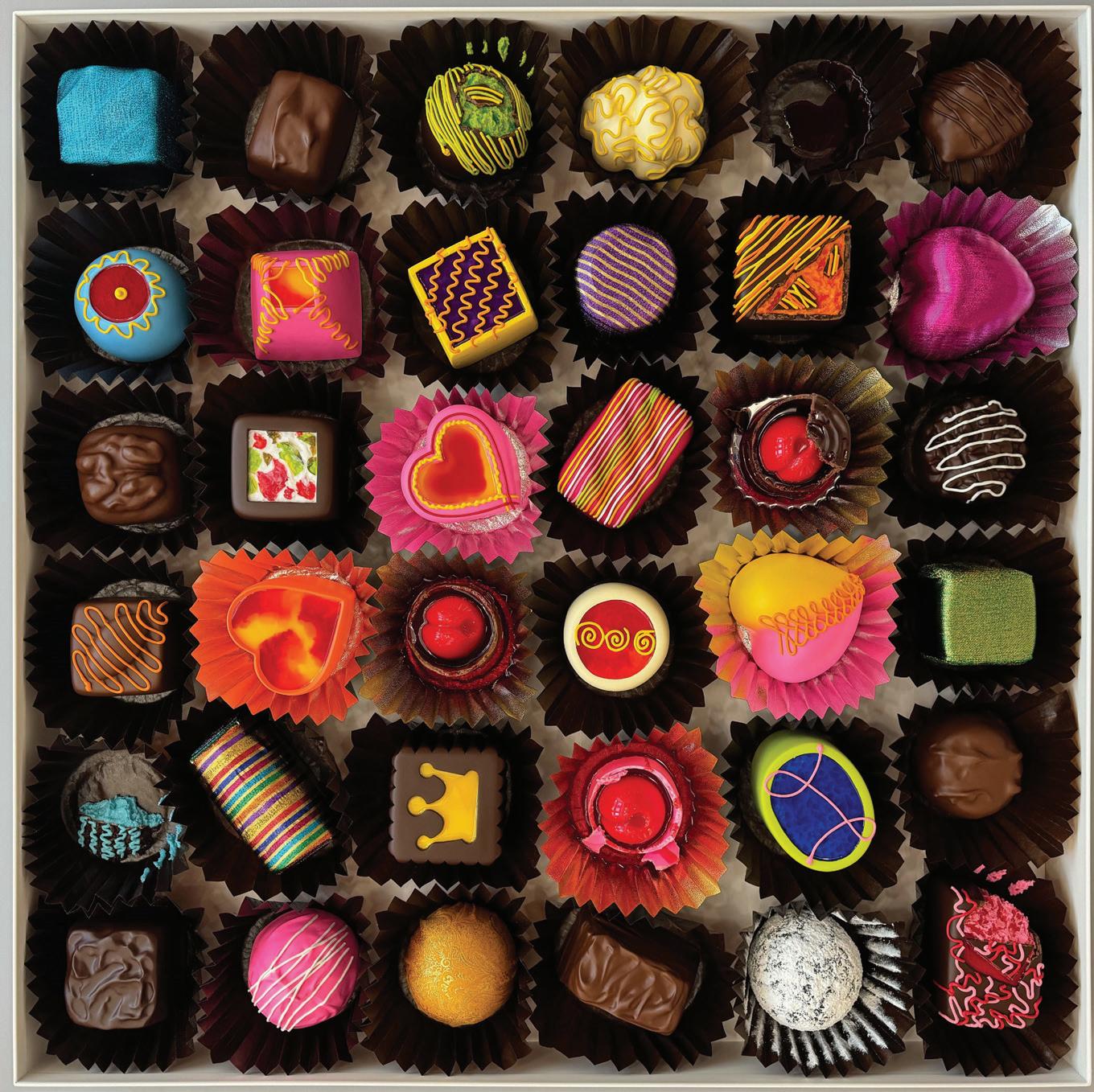PETER ANTON Just Desserts

May 10July 27, 2024

Director’s Foreword
Peter Anton: Just Desserts is just plain fun! As we head into the summer, we are delighted to fill the Museum’s Walsh Gallery with this exuberant exhibition showcasing a selection of Peter Anton’s remarkable Pop Art sculptures. Anton’s models for this spectacular array of candies, pastries, frozen novelties, and desserts come from products that are instantly familiar to the viewer, and evoke a nostalgia for childhood (and adult) favorites. The hyperrealism of the works and their outsized dimensions make for a fascinating and entertaining art experience.
We are very grateful to Peter Anton for his collaboration on planning and installing this exhibition and for lending all of the works – none of this would have been possible without his enthusiastic support of this project. We would also like to thank Peter’s husband and studio assistant, Bob Schnabel, for all of his help along the way.
We would like to thank Linda Traut for allowing us to reprint her essay about Anton’s work, written for the catalogue of an exhibition at David Klemm Gallery, Wiesbaden, Germany, in 2021, in the pages that follow.
Thanks as always go to the exceptional museum team for their hard work in bringing this exhibition and its associated programming to life: Michelle DiMarzo, Curator of Education and Academic Engagement; Megan Paqua, Museum Registrar; and Heather Coleman, Museum Assistant. We are grateful for the additional support provided across the University by Edmund Ross, Susan Cipollaro, Dan Vasconez, and Tess Brown Long, as well as by our colleagues in the Quick Center for the Arts and the Media Center.
Carey
Mack Weber
Frank and Clara Meditz Executive Director


Peter Anton
“An artist usually does their best work when they focus on something they know about very well and have experience and knowledge about that subject matter. For me, this was food.”
Ahuge ice cream sandwich. A gigantic Swiss roll. An oversized donut. They dance in front of a light blue sky, held in front of a camera by two hands. Peter Anton presents recently completed works on his Instagram account. That says a lot about the sculptor Peter Anton. First, he makes very real looking, but gigantic and inedible goodies, i.e. sculptures. Second, he enjoys his work, he has a sense of humor and presents his work with a twinkle in his eye. Third, although he obviously uses social media for promotion, he himself is not at the center of attention. Peter Anton likes to turn the spotlight on his work.
The sculptor Peter Anton was born 1963 in New Haven, Connecticut, USA. He studied art and was originally involved in the film business. His striving for perfect illusion and for the extravagant staging of his exhibitions can be traced back to this background. Since 1991 his works have been presented in numerous exhibitions. He had his first solo exhibition in 1993 at Henri Gallery in Washington, DC. First and foremost, Peter Anton is undeniably enthusiastic about food and shares this enthusiasm with the world, as has been reflected in his oeuvre for 30 years.
Works of art: sweet or savory.
“I enjoy all kinds of food and treats. I was never a fussy eater. I eat a chocolate every night before bed. I grew up at a time when the entire family sat down for dinner. It was not only about eating great food that was presented beautifully it was also about the discussion we had around the table.”
Peter Anton is best known for his sculptures of gigantic chocolates, although his range of works includes pastries and cakes as well as candy. Thanks to his artistic skills, the objects look extraordinarily realistic – especially those with a glazed surface. In some articles, Anton is therefore often referred to as a candy artist or as “Candy Warhol.” Chocolate and donut boxes top his list of works, followed by ice cream in different variations, cakes and pies, lollipops, fruit gums and macarons, sugar hearts and candy apples as well as a chocolate Easter bunny. The models for his sculptures come mainly from the US and some sweets may therefore not fully develop their iconic and nostalgic effect in Europe. One such example would be “Double Pops”: a popsicle with two sticks that can be split and then shared. Corresponding to the actual frozen products, the colors appear particularly intense and even garish. Especially his versions of cakes in pink and turquoise look unusual in the eyes of Europeans. But it is this passion for color that accounts for the appeal of Peter Anton’s works.
Peter Anton’s “salty” works include fried eggs, bacon, hamburgers, fish, sushi, steak, peanuts or pizza. There are also various fruits – some of them dipped in chocolate. Just like his “sweet” sculptures, they are larger-than-life and accurate in every detail. The salty foods that he bases his sculptures on are just
as high in calories and mouth-watering as the sweet ones. However, their effect is somewhat different. For one thing, the aesthetic appeal of a raw steak or piece of fish takes more getting used to than that of a donut. Even a perfectly fried egg or a piece of fried bacon are not as appealing in terms of their surface texture when compared to a smooth sugar glaze or chocolate icing. For another, there is the ethical question about the consumption of animal products that has come into focus in recent years.
Technique: perfect illusion.
For Peter Anton, the focus is on the perfect illusion. Which is why he has spent a lot of time perfecting his techniques for making his sculptures. He does not reveal the entire creative process, presumably to prevent imitation, but he likes to show his basic approach via social media. His first step is to carefully examine his food models. In addition to investigating the food with a magnifying glass and numerous taste and texture samples, he also studies the recipes. This precise examination is the basis for the richness of detail in his works. The materials used vary according to the objects. Resin, metal, wood and clay serve as the sculptural base. For the shape he sometimes uses specially made molds. Acrylic and oil paints create the realistic color scheme. He makes all details himself, even the paper cups for the chocolates, since the size he needs is not available in stores for baking goods.
Exhibitions: from amusement fair to temple.
The reviews of Peter Anton’s exhibitions, especially their openings, read like a spectacle for the senses. Two such presentations are the exhibitions in New York’s UNIX Gallery in 2015 and at Art Miami in 2012 during the Art Basel Miami art fair week.
The week of Art Basel Miami, the US edition of Art Basel in December, is known for alternative art installations. The unusual presentation by Peter Anton in 2012 fits into this framework. The artist invited visitors to a roller coaster ride with the title “Sugar & Gomorrah.” As at an amusement fair, two visitors could sit next to each other in a roller coaster car. They then rode through a world inspired by “Sodom and Gomorrah” and filled with “sweet” sculptures as well as erotic – albeit G-rated – scenes that were staged by living models. In contrast to a classic gallery visit, the visitors could not determine the length of stay in front of the individual works and scenes themselves. The background with music and the design of the entire ride emphasized the amusement character – with no time for art-loving contemplation.
UNIX Gallery in New York presented a similarly spectacular production in 2015, this time in a different guise: the solo exhibition “The Foodhist Temple” (the word “Foodhist” being a play on “Buddhist” and describing a zen-like state of mind in respect to food and eating). The experience here was completely different: to enable contemplative discussion, the gallery was covered with carpets and cushions, visitors had to take off their shoes, and subdued lighting created a special atmosphere. On red walls, framed with golden stucco, hung the various oversized foods from sushi to boxes of chocolates.
In both cases, Peter Anton staged the encounter with his works of art or with food as an event. For him, they represent the close relationship that people

have with food – as nourishment and stimulant. Both presentations underline the humorous and ironic character and the emotional approach that Peter Anton chooses for his works.
Pop Art, consumption & temptation.
“People are very passionate about food and the conversation can become heated at times just like talking about politics. I observed the powerful hold food has on us all and am always fascinated by this.”
In his presentation “Sugar & Gomorrah” from 2012, the aspect of temptation becomes particularly clear. It was only possible to get a quick glimpse of almost naked bodies and deliciously presented sweets. Anton is aware of the magnetic effect of his works and exploits it. For many, his eye-catching sculptures place him in the tradition of Andy Warhol – which is why some refer to him as “Candy Warhol.” There certainly are similarities between the two artists - with both choosing subjects that are familiar, attractive and bold. But Anton’s works attract exhibition visitors not only because of the subject matter, but also because of their wealth in detail. The illusion is so intriguing that it works both from a distance and up close. His works invite you to look closely and examine the material. Although the works are not edible, you are invited to a detailed “consumption” with your eyes. And consumption is ultimately the issue. Half-eaten chocolates, missing donuts and ice cream bars with a bite missing: these delicacies are portrayed in the middle of the process of being eaten. However, Peter Anton is not practicing consumer criticism, rather he indulges himself in pleasure, and his solo exhibitions are a feast for the senses

and a celebration of food. At the same time, he offers viewers something to reflect on: What does the sight of this food do with me? Which emotions are triggered? In this way, he makes a chain of thoughts visible that often gets forgotten in everyday life.
The perfect illusion: hyperrealism.
It is mainly his open boxes of chocolates that cast a spell over viewers. The perfect sleekness of an advertising image is disrupted by individual empty paper cups or even chocolates that have been bitten off and put back into the box. They make the works hyper-realistic and tell a story. Why were the bitten off chocolates put back? (Cat. xx, fig. xx (detail)) Was the liquor filling too bitter? Or was it the sudden thought of calories? The “used” works create an imaginary consumer, to whom one involuntarily establishes a connection. This unknown protagonist may have had similar thoughts, feelings and desires when looking at the chocolates.
Peter Anton shows us familiar things, shapes and colors. As a result, the viewer has an immediate connection to his works. Because the viewer is not made insecure by what is depicted and the subject is recognizable, a basis for a deeper contemplation on Anton’s works is possible. The viewer can initially think about the artist’s craftsmanship and compare the work with their real-life inspirations. From there on questions and topics can develop. Peter Anton offers the viewer assurance and easy access to his works.
As easy as pie? Democratic art.
Many articles and texts about Peter Anton’s works contain – mostly right at the beginning – a description of the sensual impressions, like the desire to eat his works of art (which is certainly not a typical approach of journalists or art historians when describing artworks). However, it is precisely this connecting element that exemplifies the sensual perception of his works. It is something everyone can agree upon, whether coming from an art historical background or not. Even a child – especially a child – can understand this effect. This is an outstanding quality of Peter Anton’s works, which ultimately has given them a place in so many collections. Regardless of perspectives and interpretations, his works speak in a direct and personal way and offer an easy starting point to start talking about art. His works do not require any prior art historical knowledge. You can consider Duchamp or Andy Warhol, but you don’t have to. His works are easy to recognize in terms of their subject matter, and the effect and technique are undisputed. This makes Peter Anton a very democratic artist whose works are accessible to everyone.
Gigantically delicious: Of Alice and Charlie.
“Humor is one of the most important elements we have in order to cope and survive in this world.”
The size of Peter Anton’s works and the presentation in his solo exhibitions are reminiscent of “Alice in Wonderland” or “Charlie and the Chocolate Factory,” The reason is the incongruity caused by the size, the subject and the perfect execution. The works could also be part of a real production of Alice’s rabbit hole. Our perspective is suddenly altered. Are we small or is the object large?
Which rules apply in a world in which an egg yolk is the size of a frying pan? As adults we experience childlike curiosity through this shift in scale: familiar objects are rediscovered though their magnification and seen differently than when an egg is fried in one’s own kitchen. What was ordinary before becomes suddenly extraordinary – but remains at the same time somehow familiar. This dash of humor, which Peter Anton brings to the art world with his works, develops from the question “What if …?” It gives us food for thought that works regardless of consumer criticism and nutritional awareness. He takes viewers by the hand and gives them the feeling that he is just like them, he shares their childlike, untroubled pleasure of eating. The colors, the taste, the smell, the texture, maybe even the nostalgia.
From cookies to art
Over the years Peter Anton has made a name for himself in the art world and his artworks are in renowned collections. Nevertheless, at the beginning of his career, his works were rejected by galleries. How paradoxical the art market sometimes becomes is visible here: on the one hand, the desire for genuinely new things, on the other hand, the security of the tried and tested. At the beginning, gallery owners were certainly faced with the question: is this art? In retrospect, the definition here is, as in many other cases, determined by the presentation and reception in the context of “art.” In other words: a glass of milk on a plinth in an art gallery would be perceived as a work of art and consequently also defined as art, while the same object in your own kitchen is just a beverage with a high calcium content. A fact that has been undisputed since Duchamp.
But Peter Anton’s work goes beyond that. His works are a commentary on our relationship with food. Their size alone calls for analysis. How intense this analysis becomes correlates with existing personal or social relationships with food. His approach to the topic is so ironic and playful that nobody must feel offended. In this way, he allows space for unburdened contemplation.
Linda Traut, M.A., 2021
Originally written for the catalogue published by Davis Klemm Gallery










